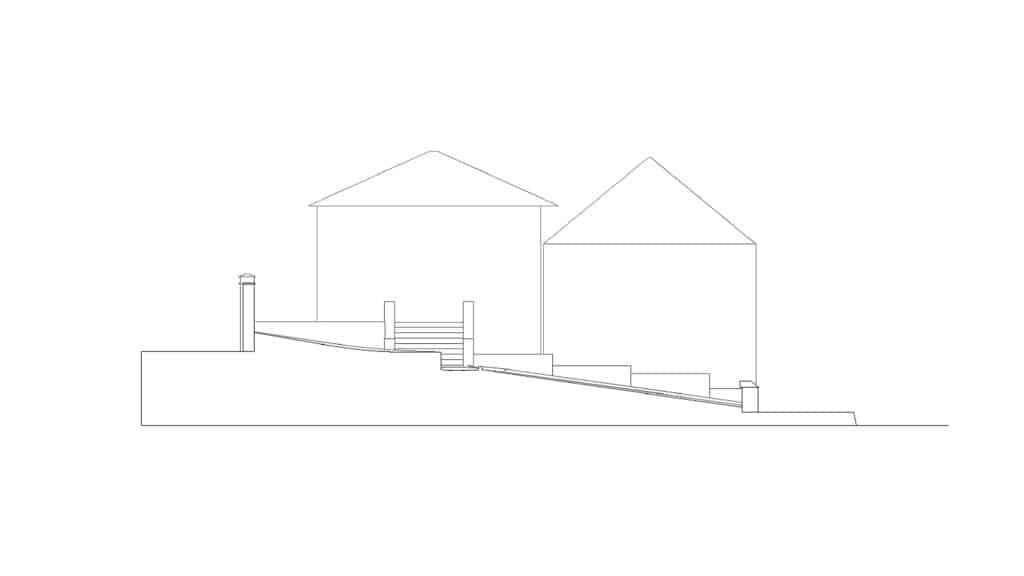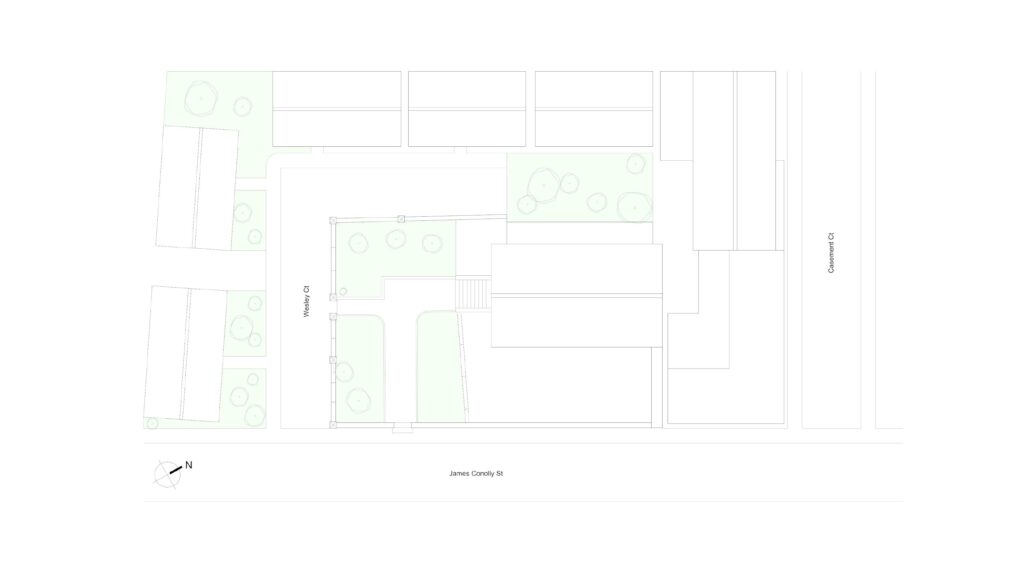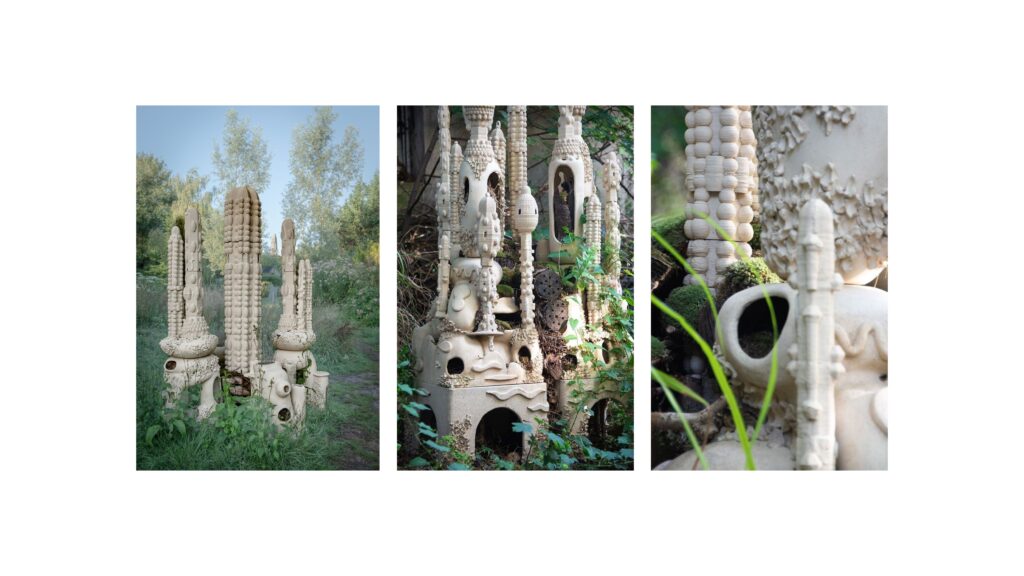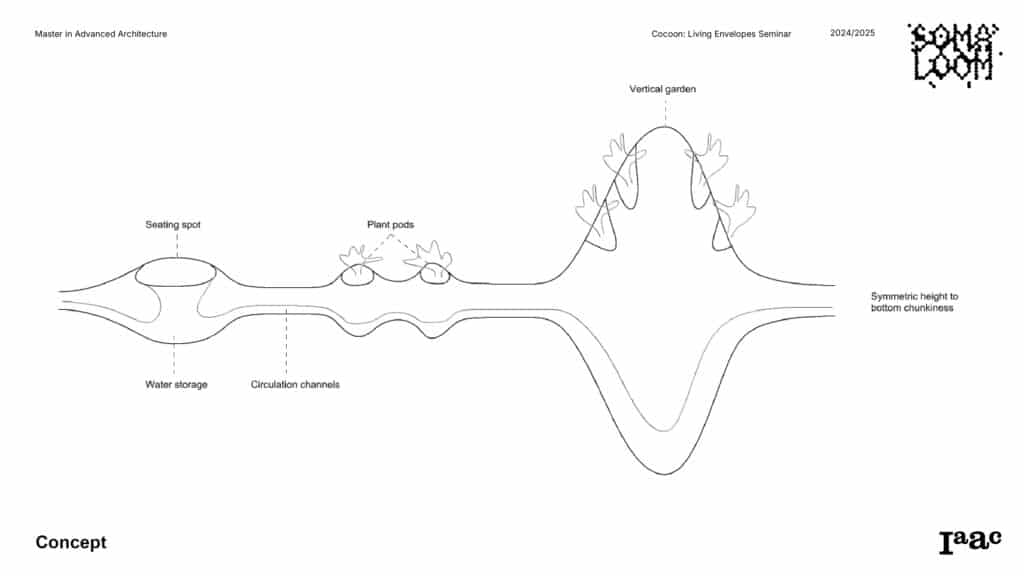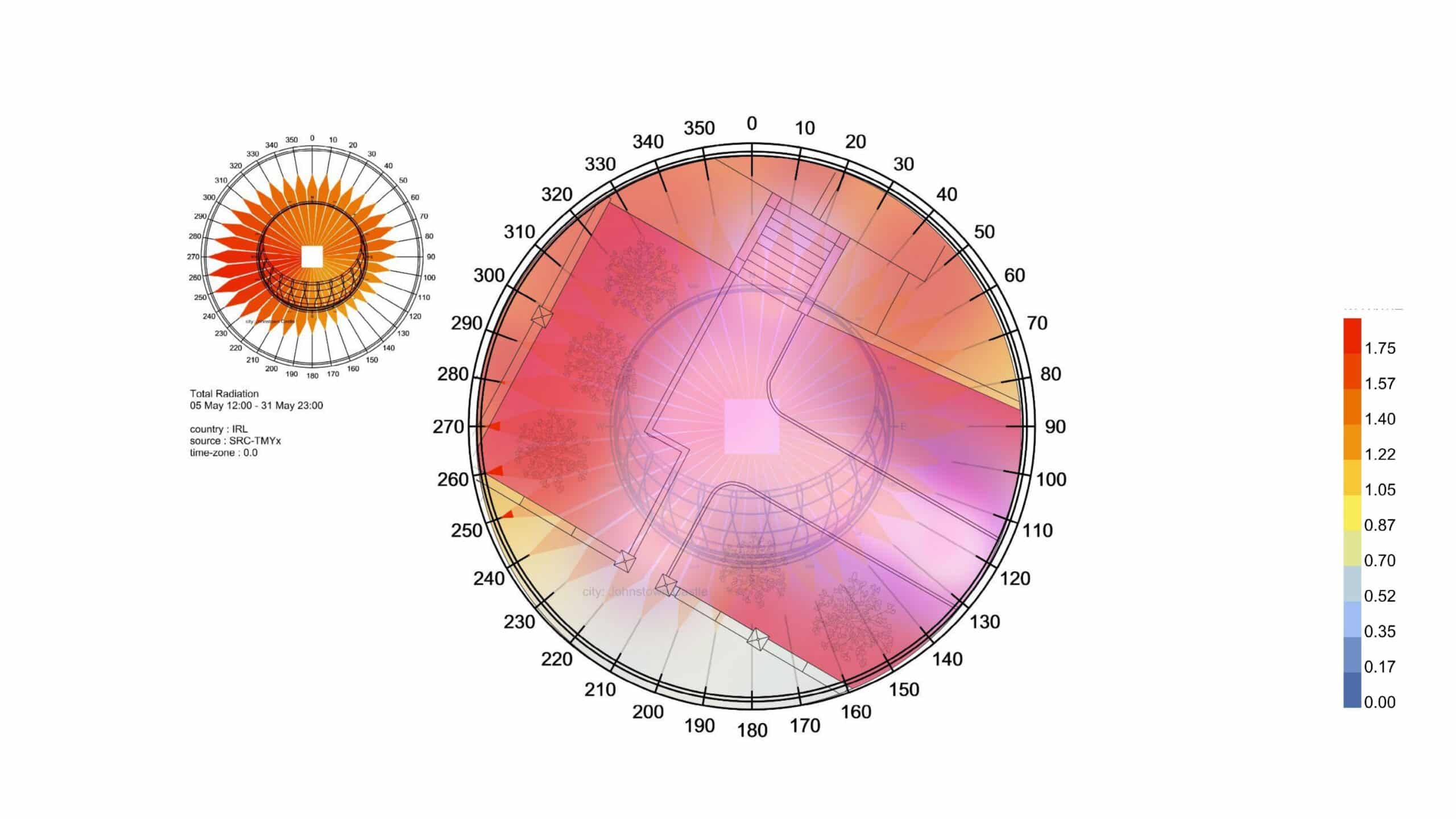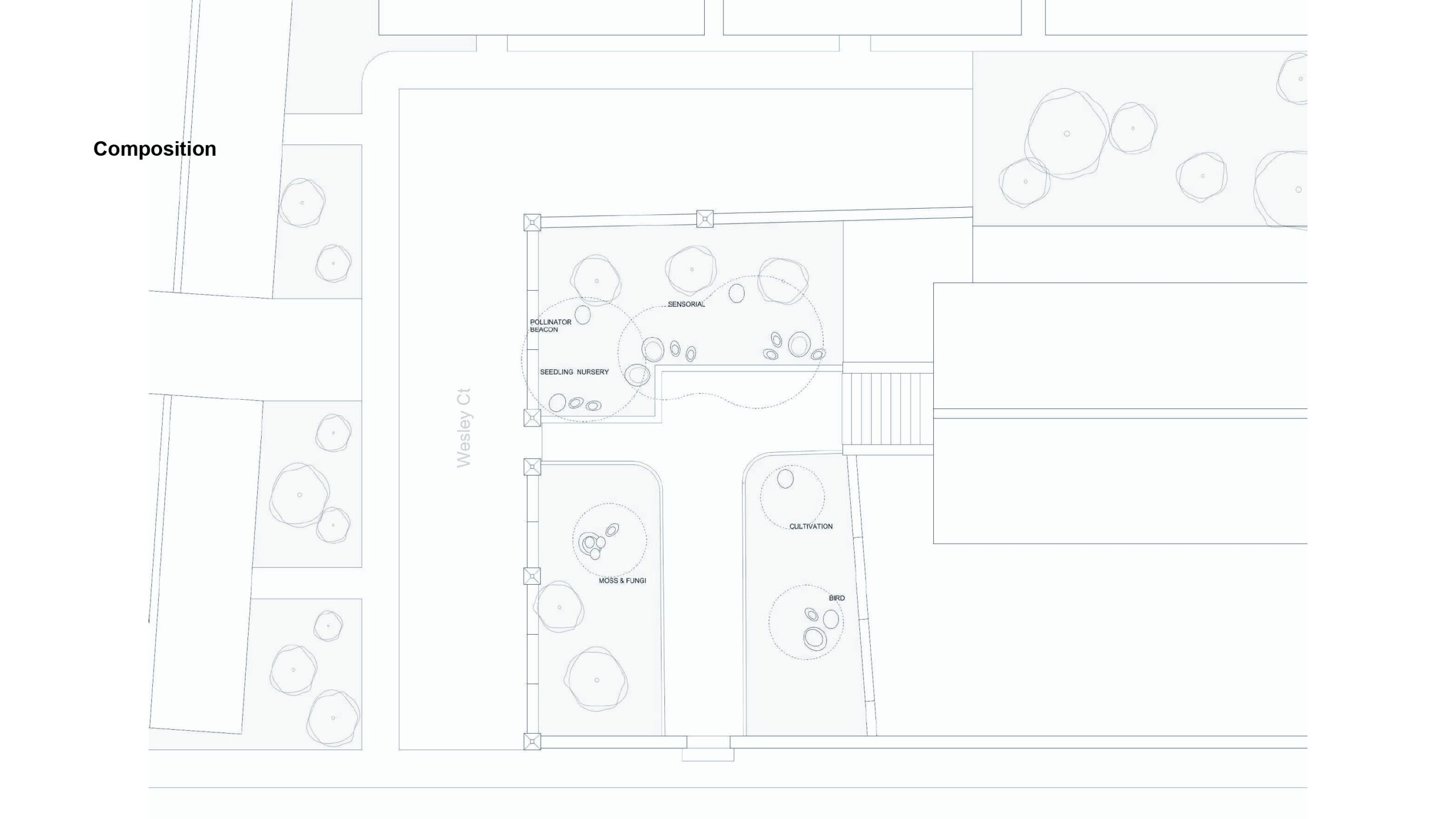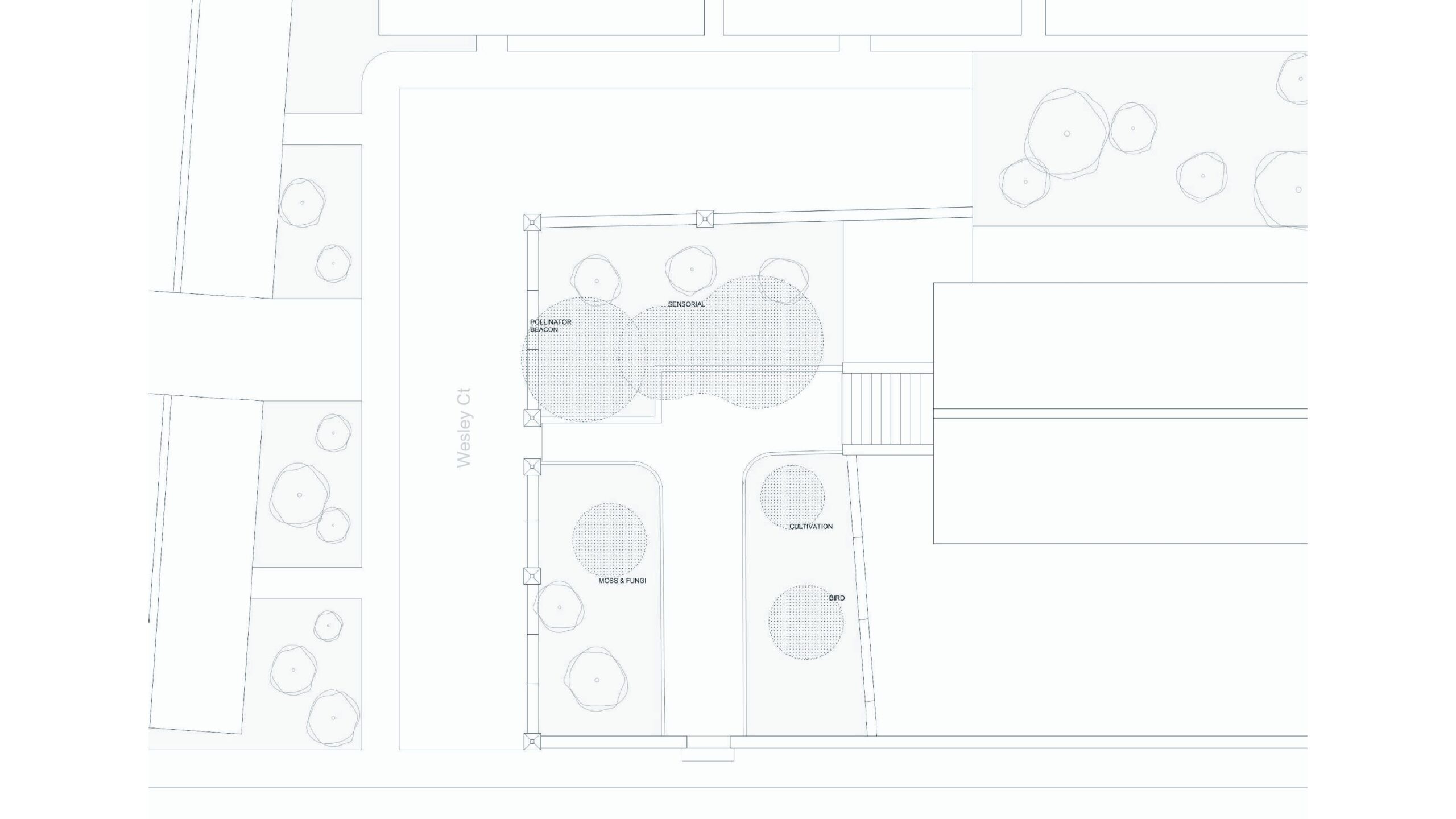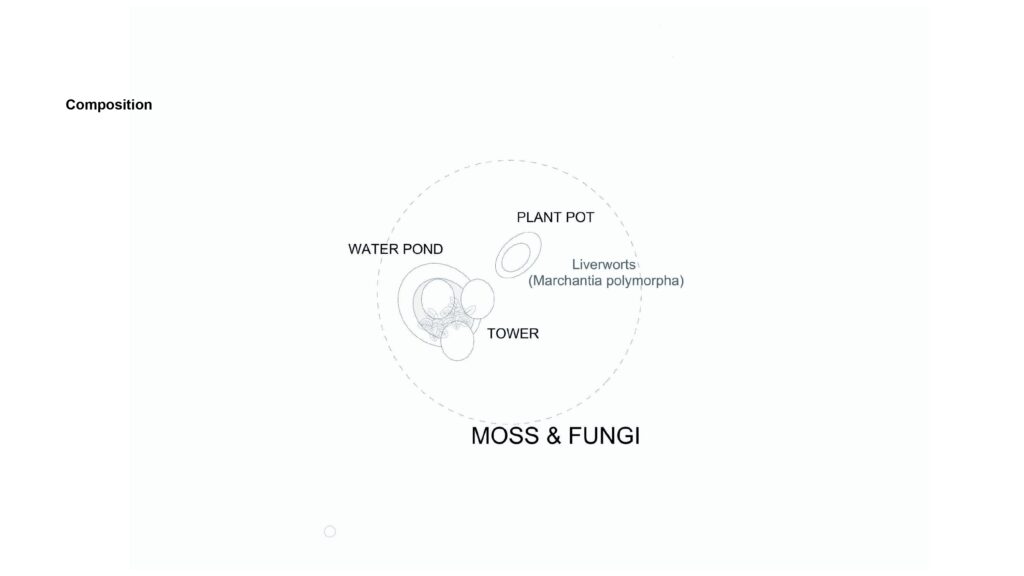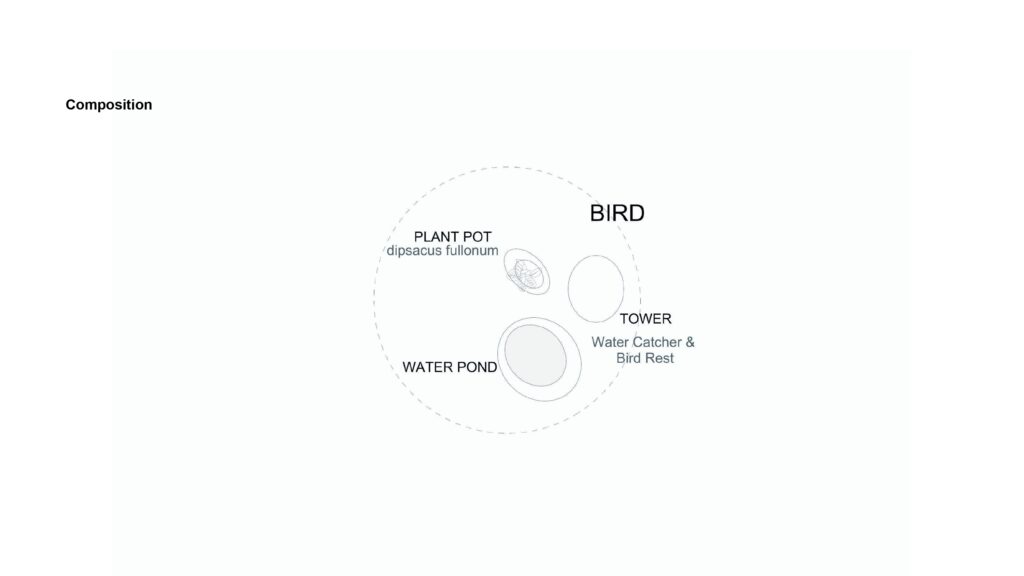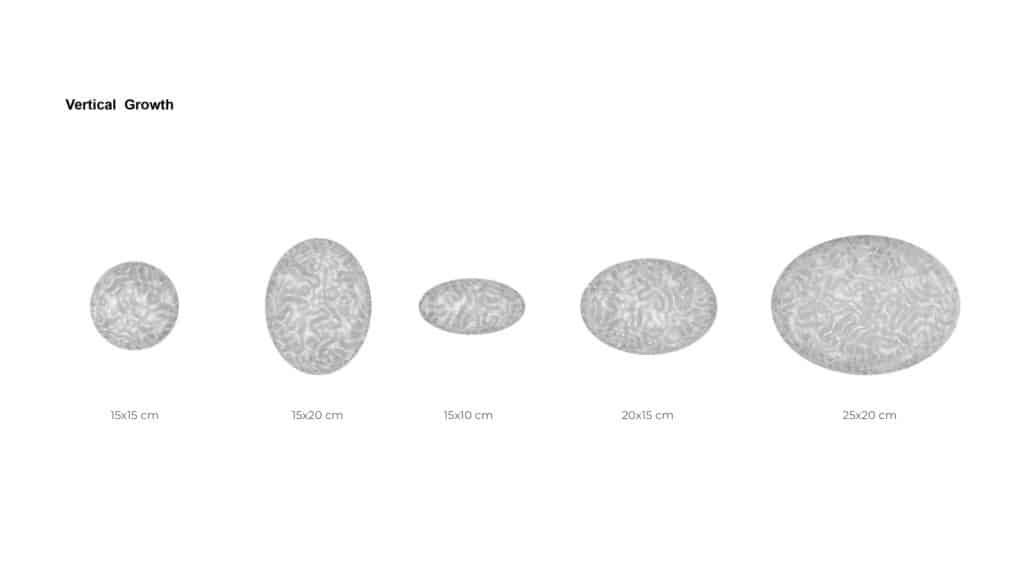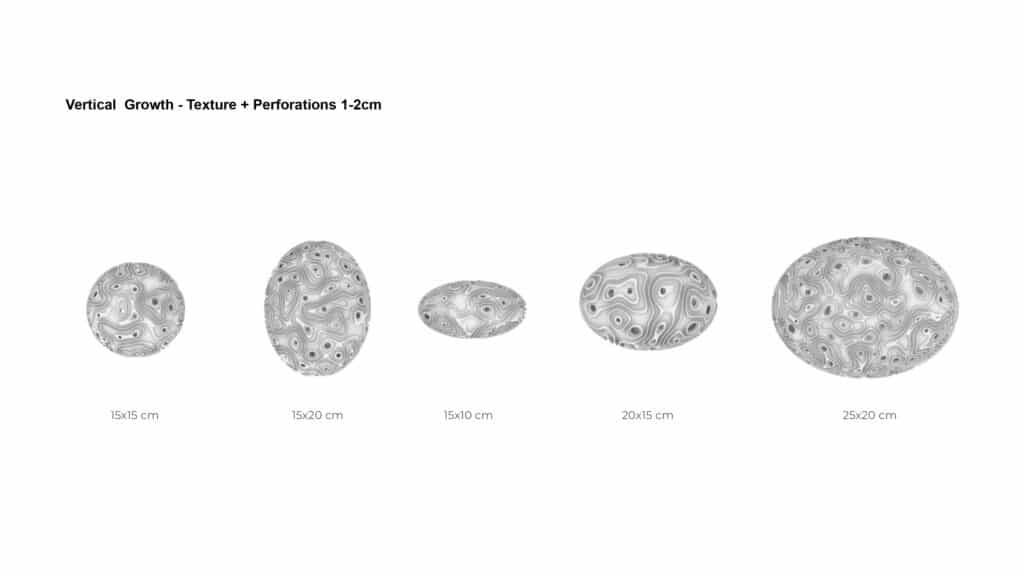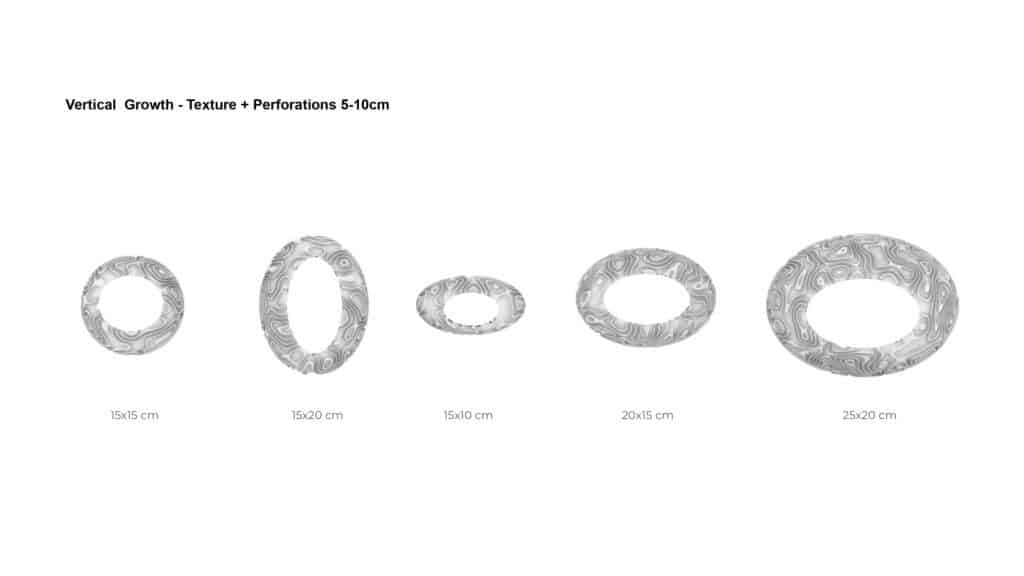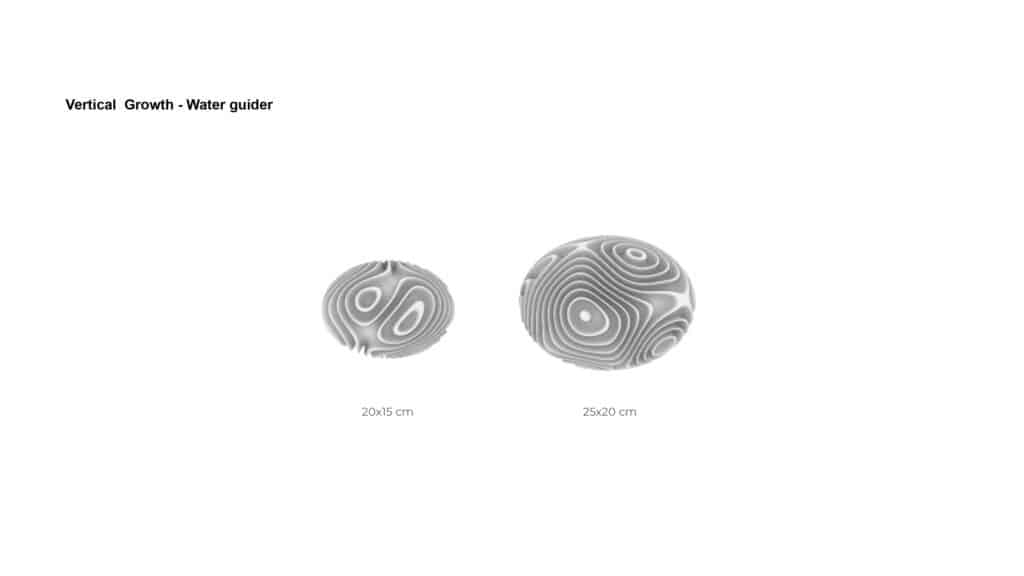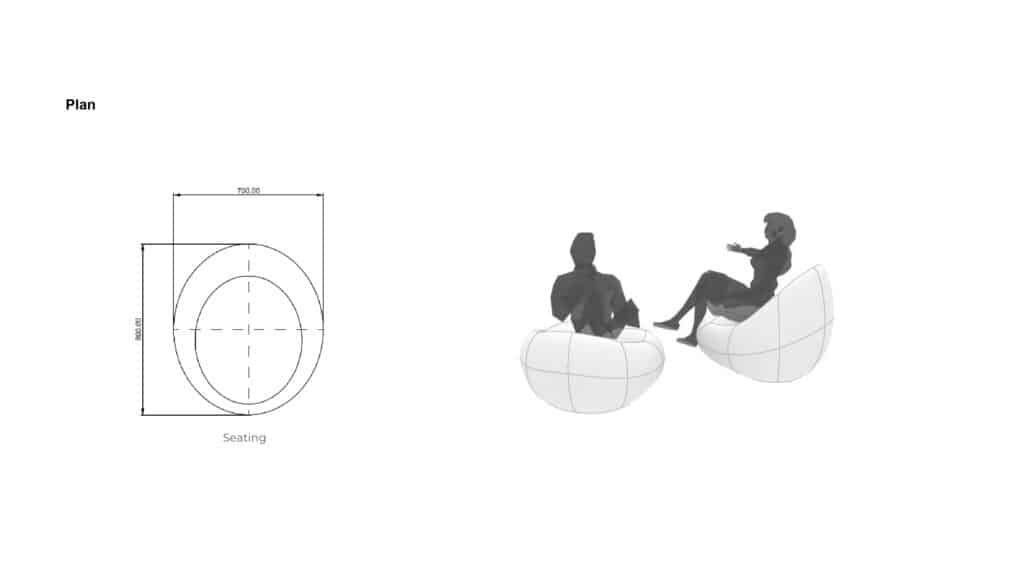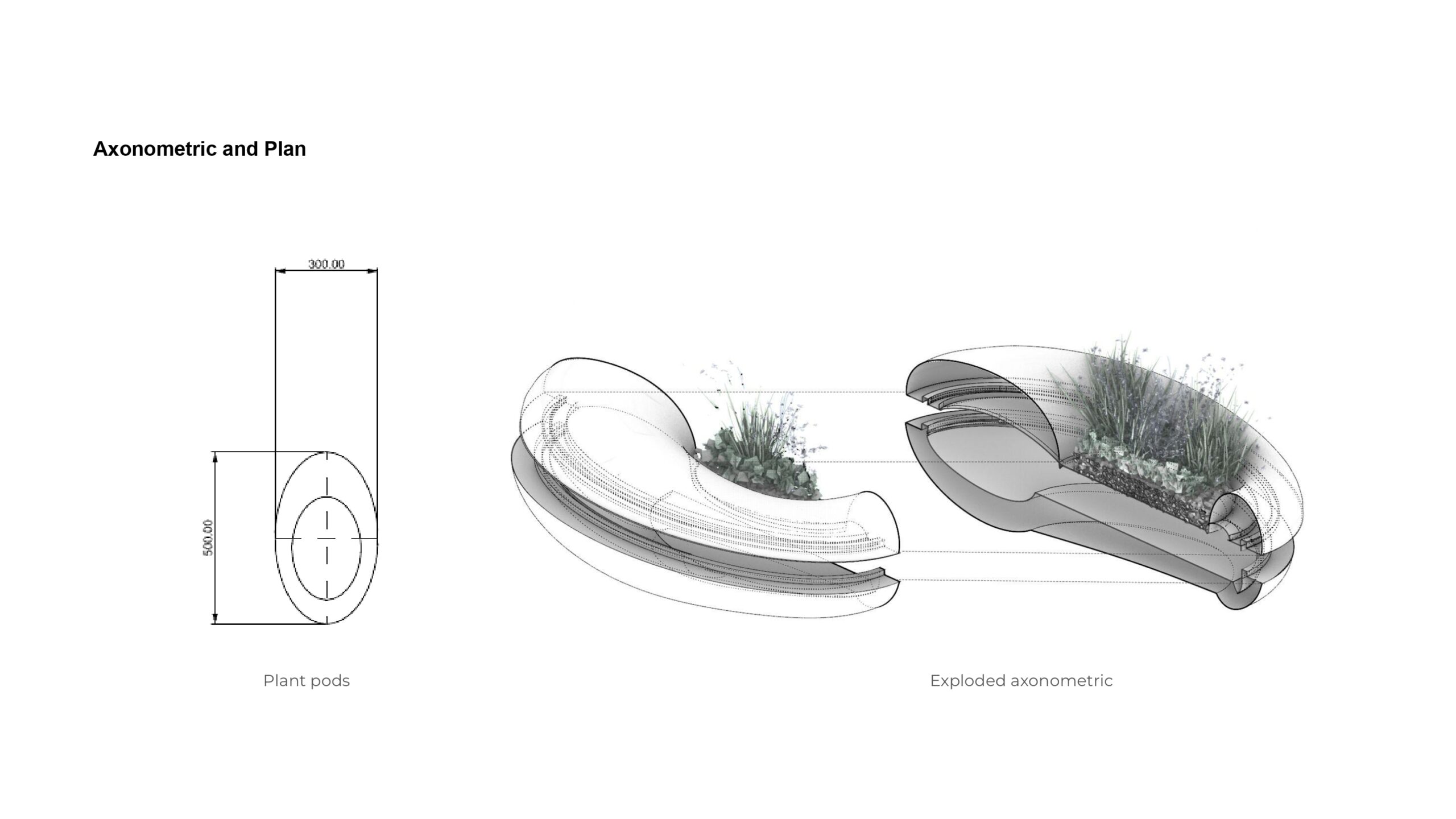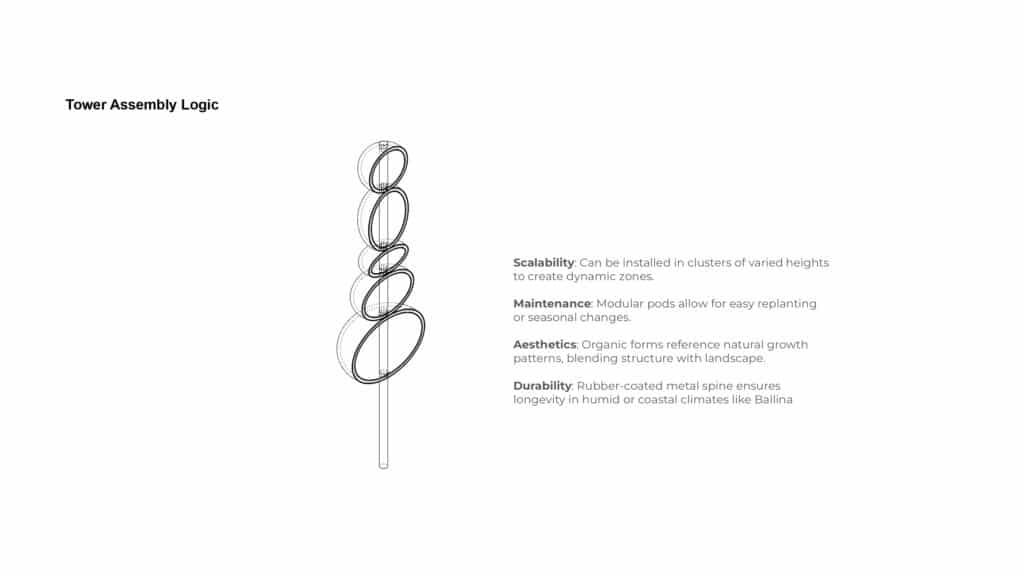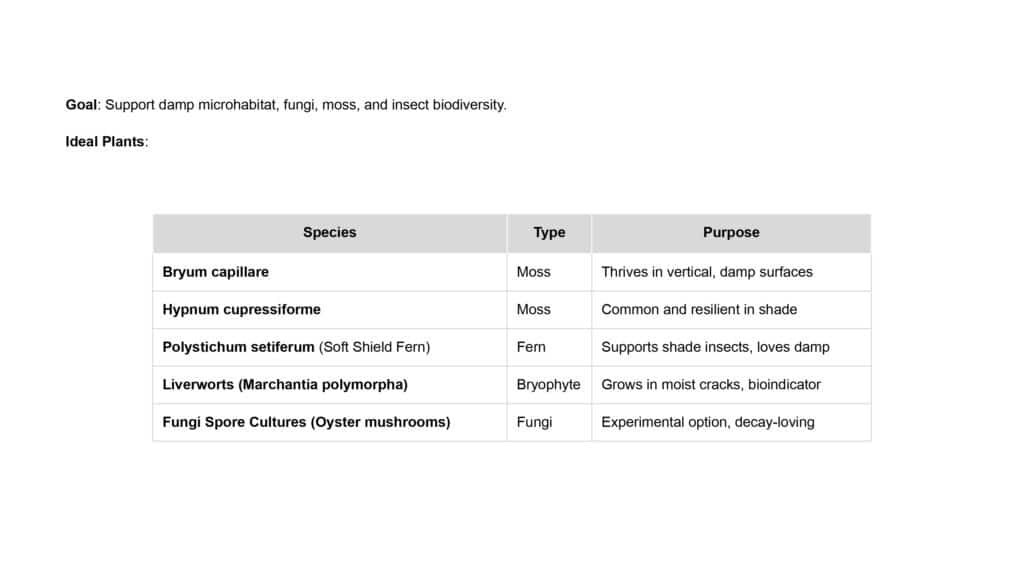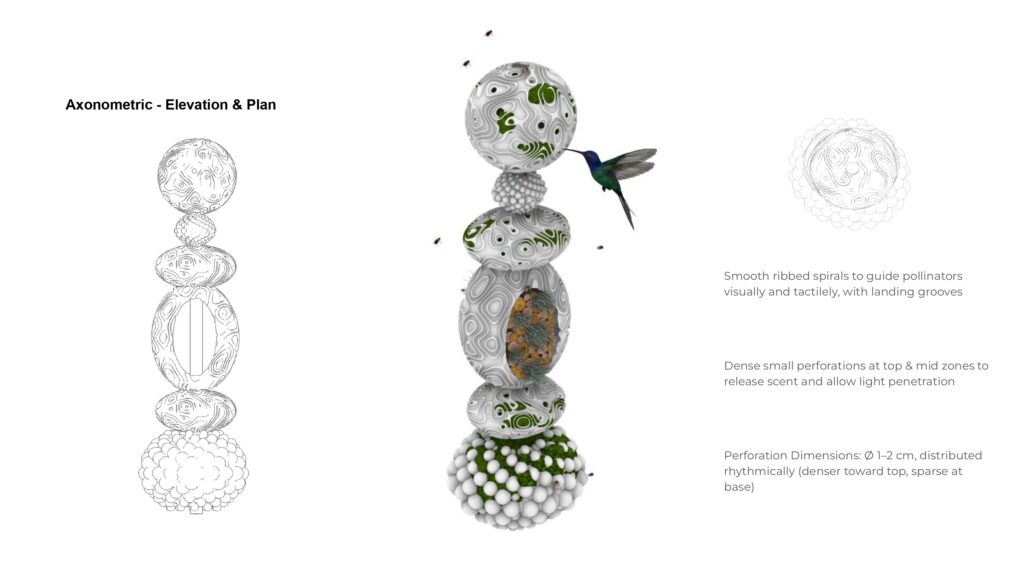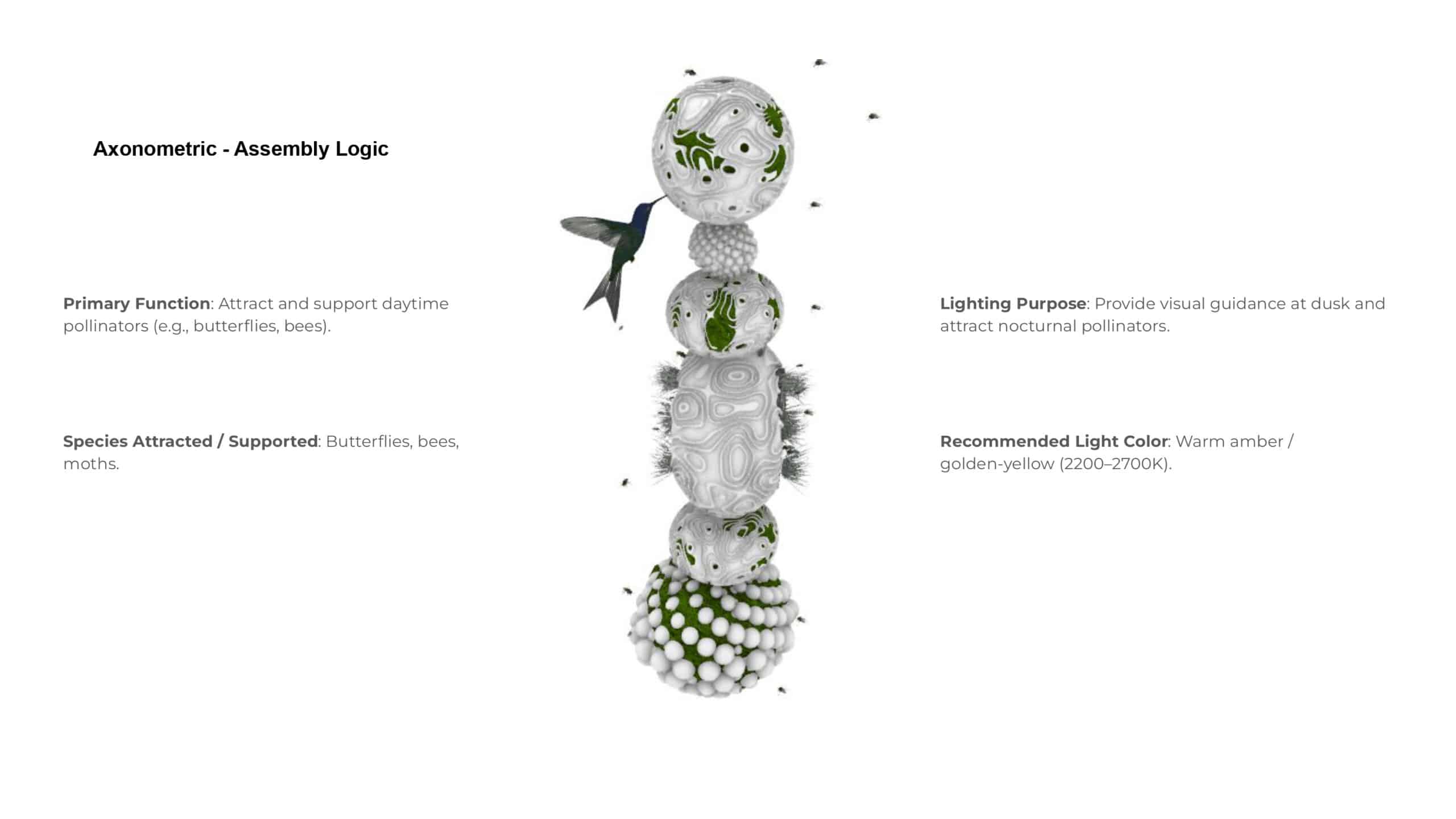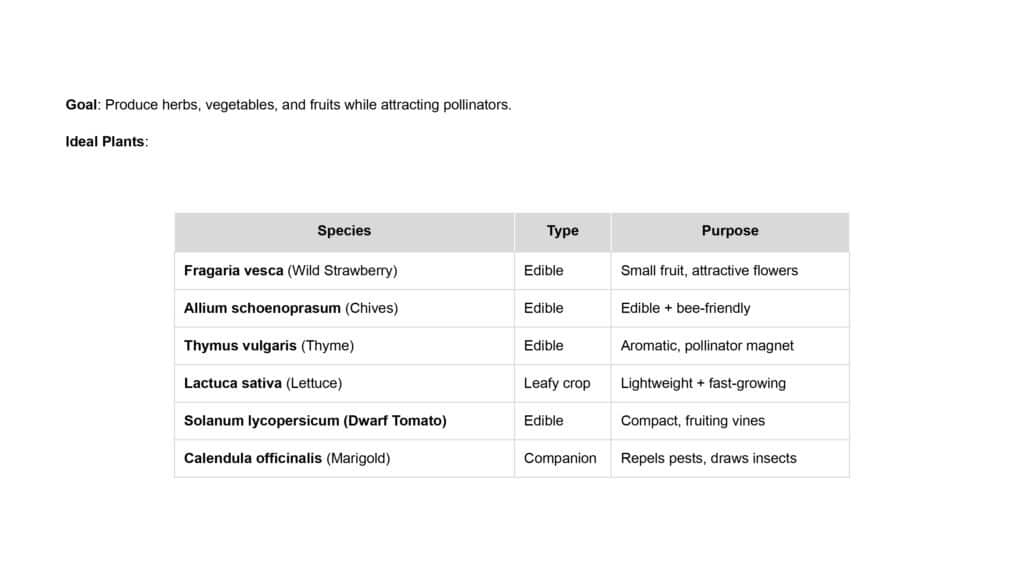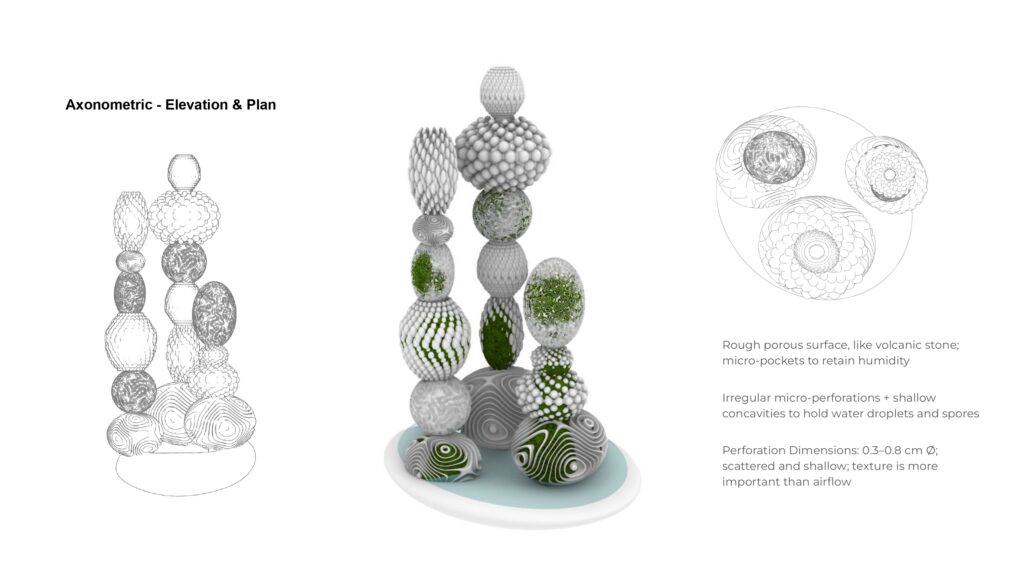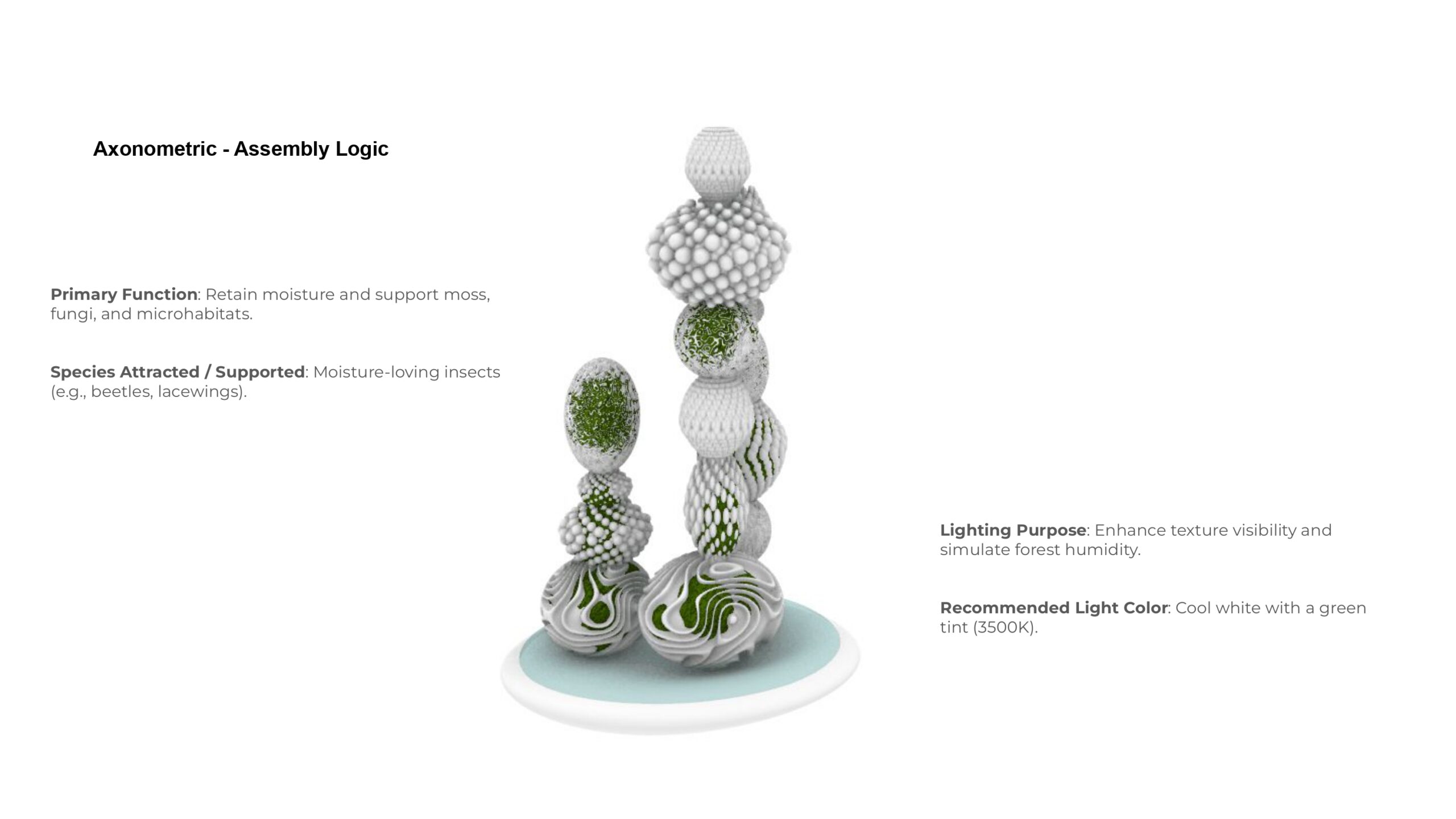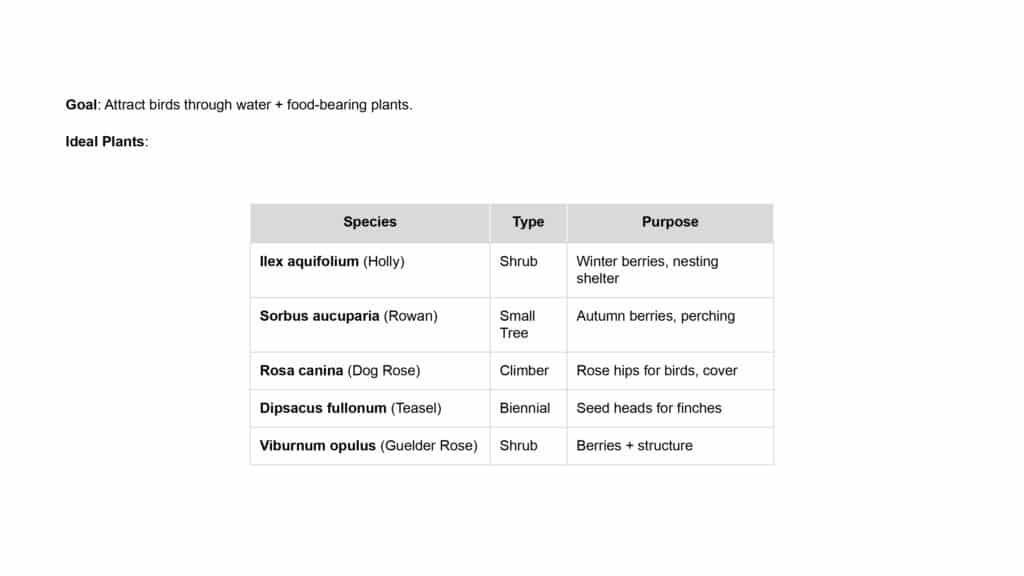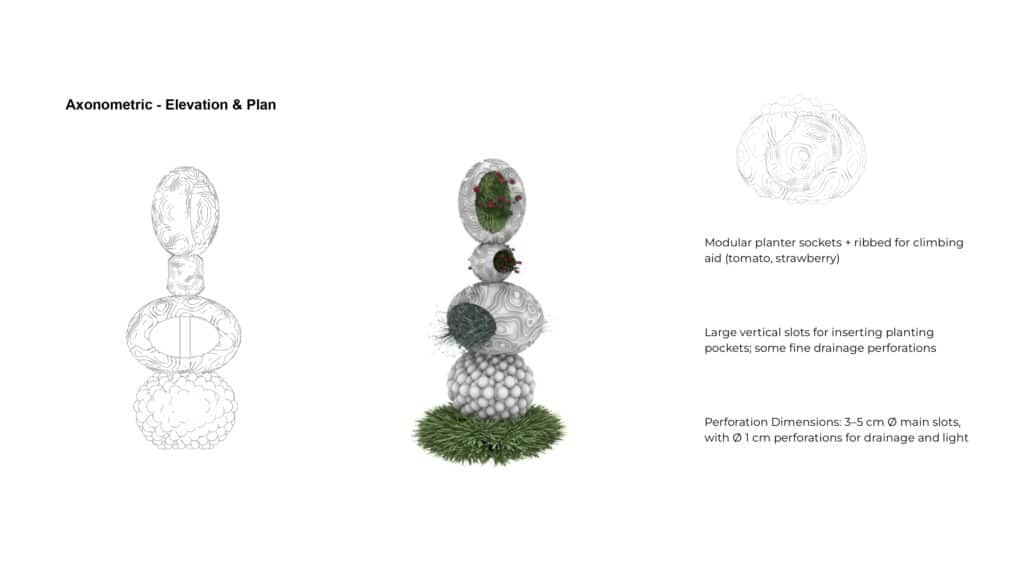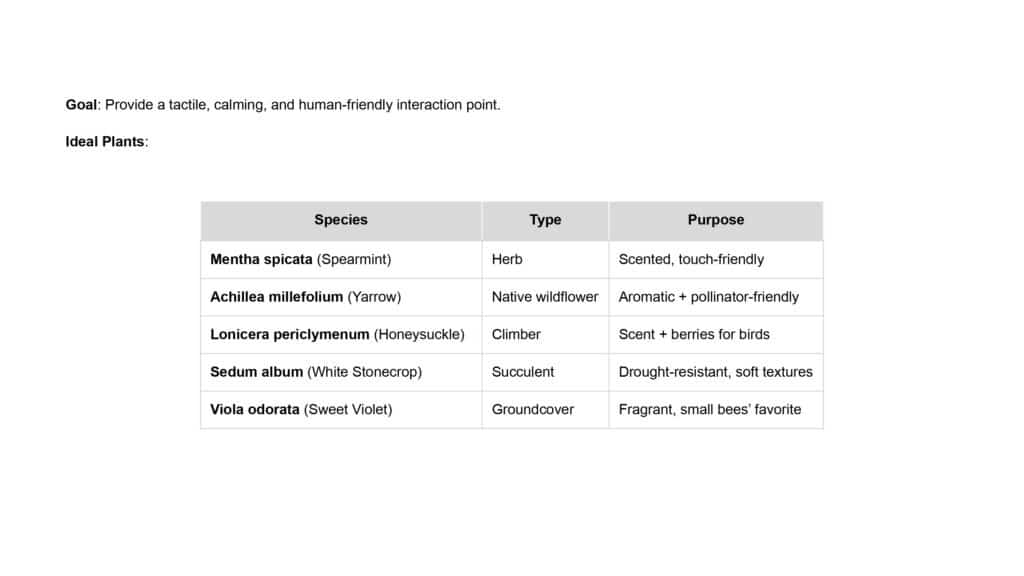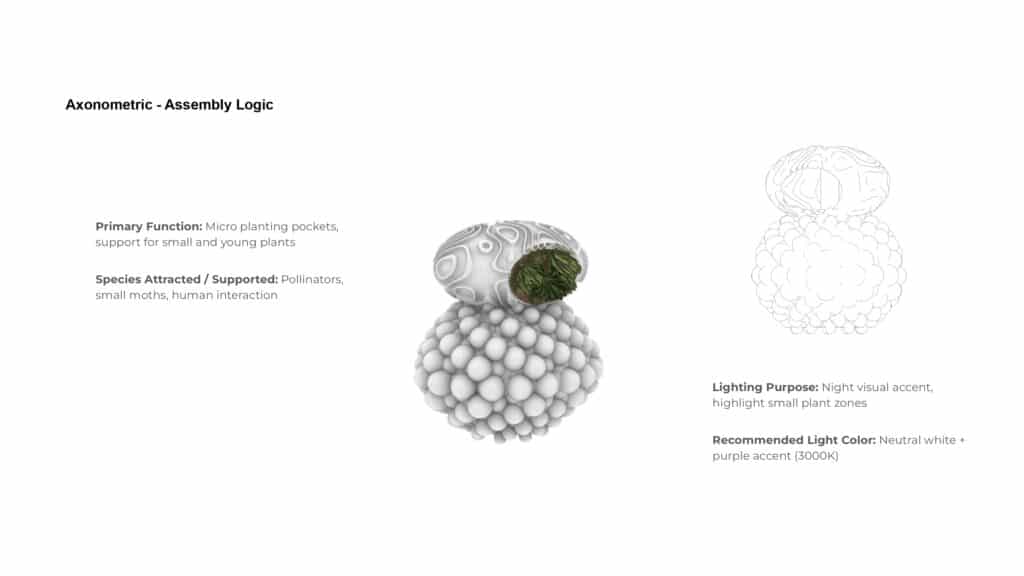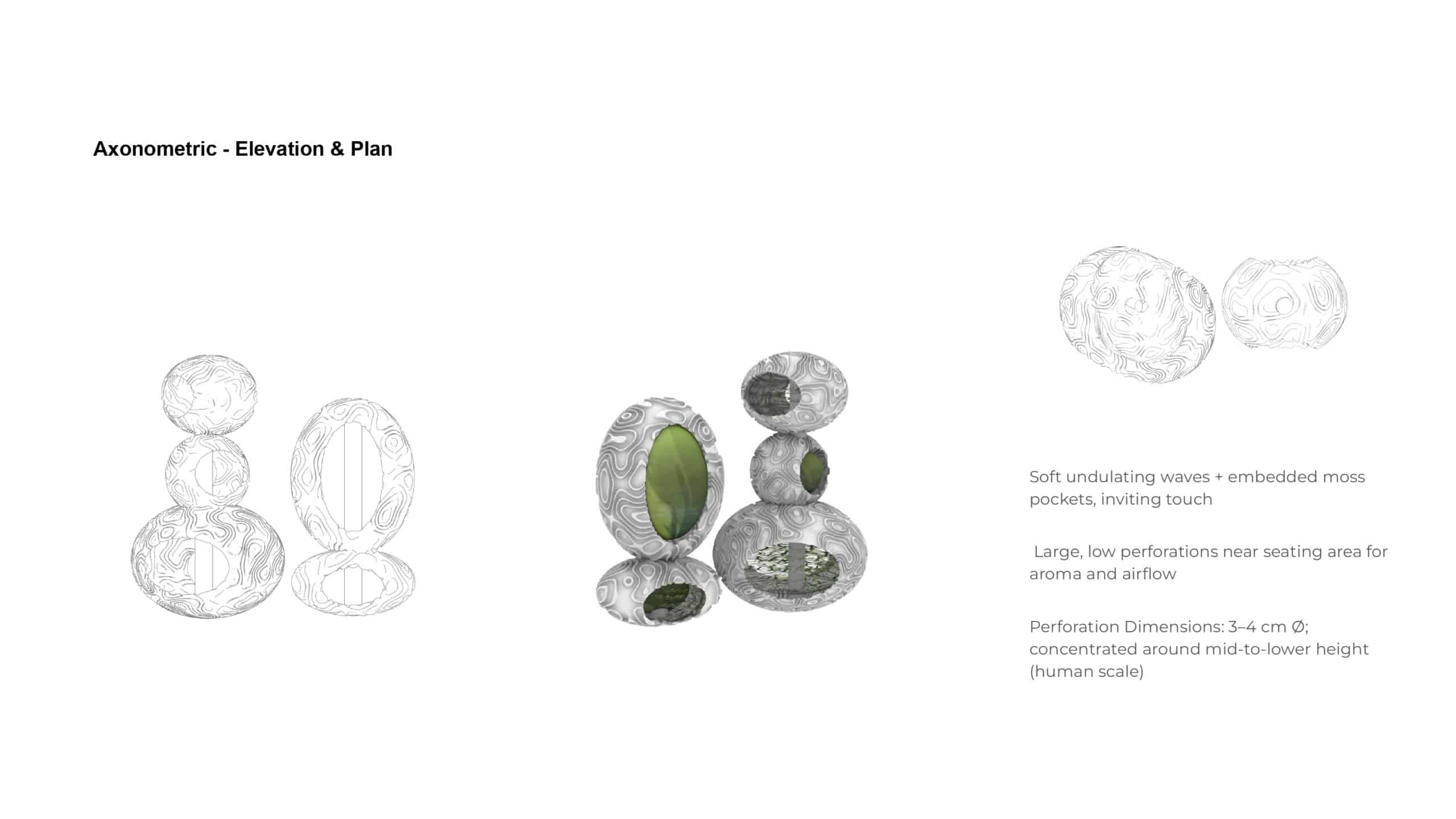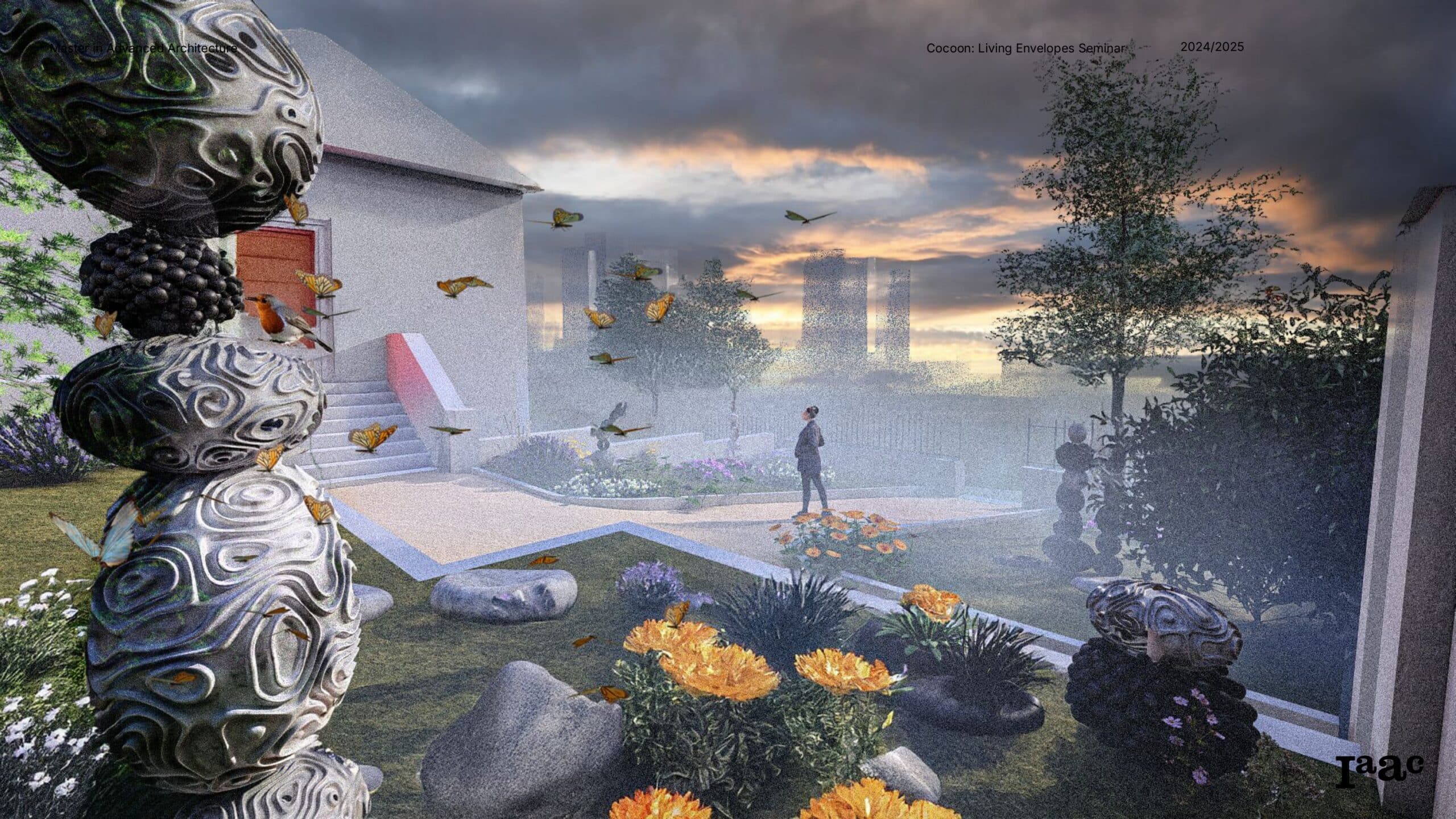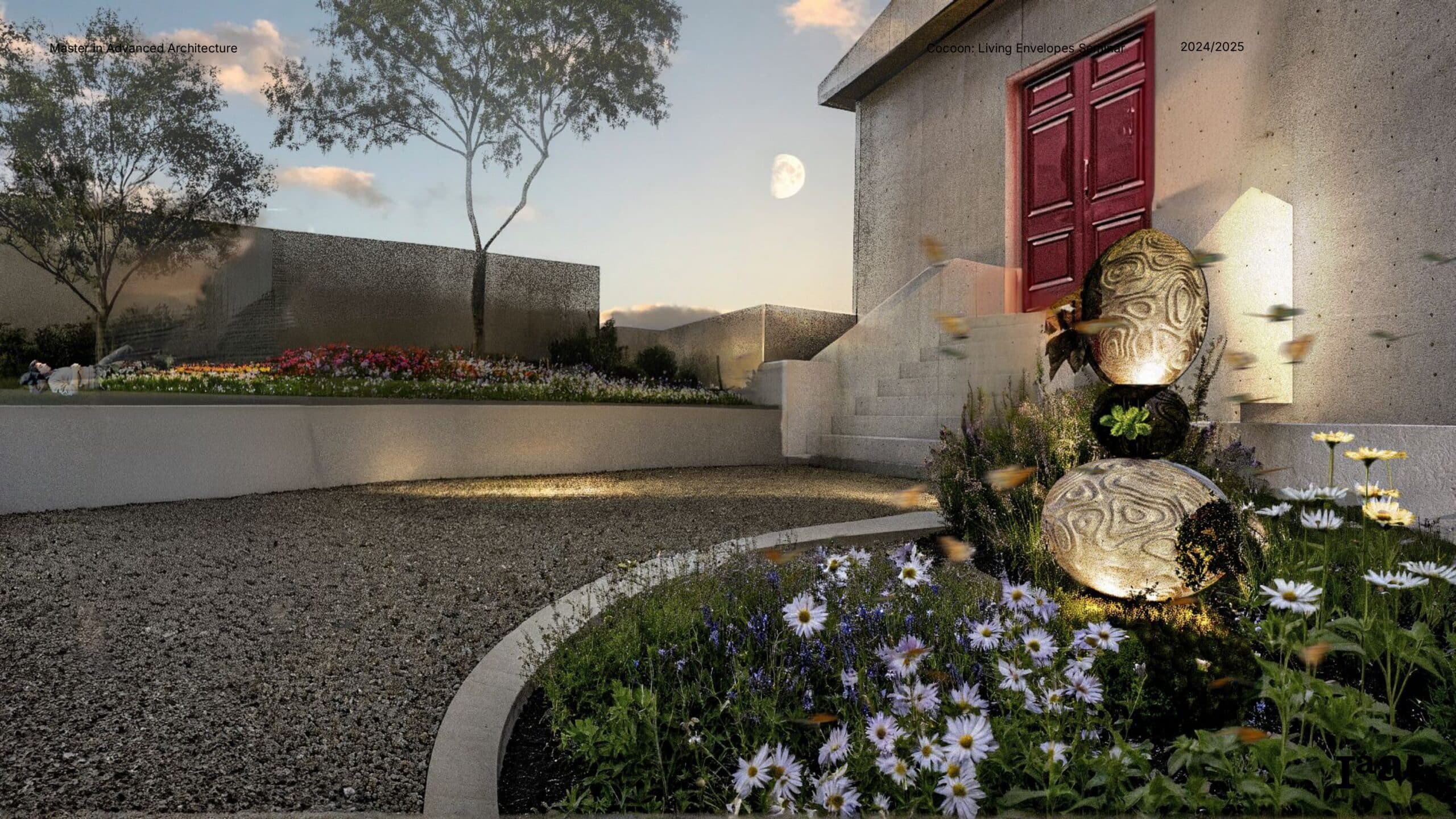
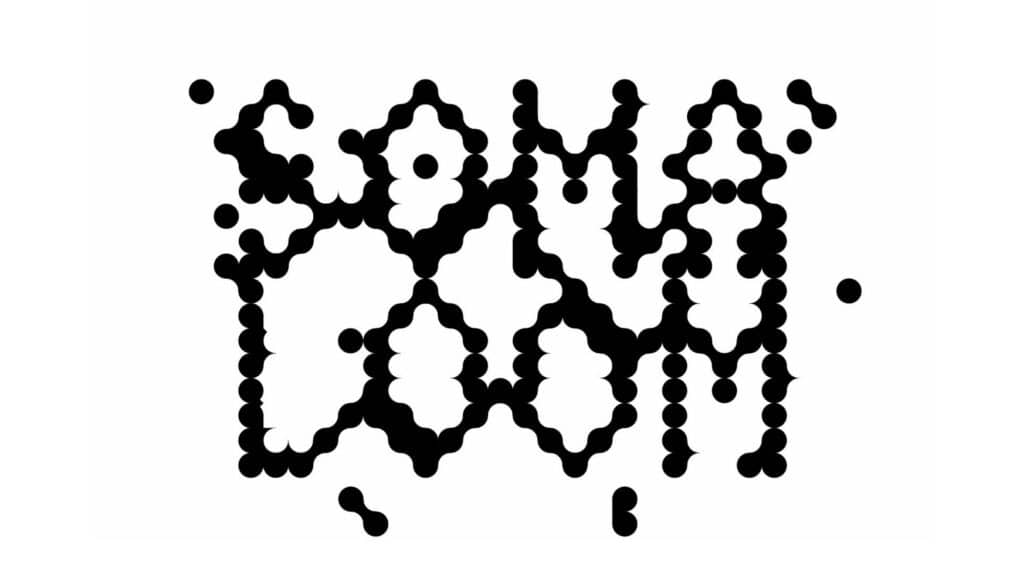
This project introduces an environmental sculpture, up to 1.5 meters tall, placed in the garden of Ballina Methodist Church in Ballina, Ireland. The column acts as a multifunctional architectural element supporting local biodiversity—attracting insects, bees, butterflies, and small birds—while blending harmoniously into the public landscape.
Constructed from a geopolymer made with crushed seashells and biochar, the sculpture is cast using a single, high-precision mold based on parametric design. Its surface includes complex textures and openings designed for light, ventilation, water drainage, and nesting. The base features grooves that support natural moss growth in moist, shaded areas.
The casting technique uses a hollow-shell approach rather than a solid mass, which reduces material use and weight while preserving structural integrity and clean geometry. The addition of biochar not only affects the material’s color (a mix of beige, grey, and black), but also acts as a natural fertilizer—enhancing the growth of moss and local vegetation, which gradually transform the sculpture’s appearance over time.
At night, the columns are softly illuminated from within using changing hues of light. These variations in color attract different species of nocturnal insects and birds, and also transform the garden into a welcoming, active community space during the evening. The column thus serves both ecological and social functions.
The project proposes a new typology of ecological micro-architecture—precisely designed, materially expressive, and deeply integrated into both natural ecosystems and communal urban or rural gardens.
